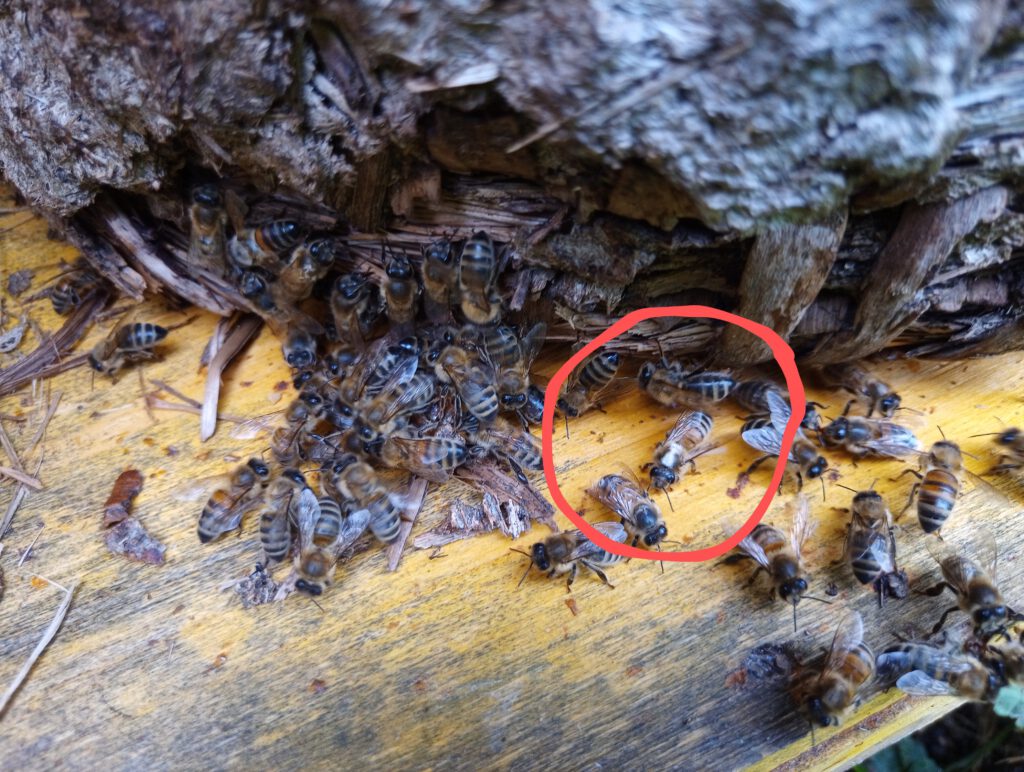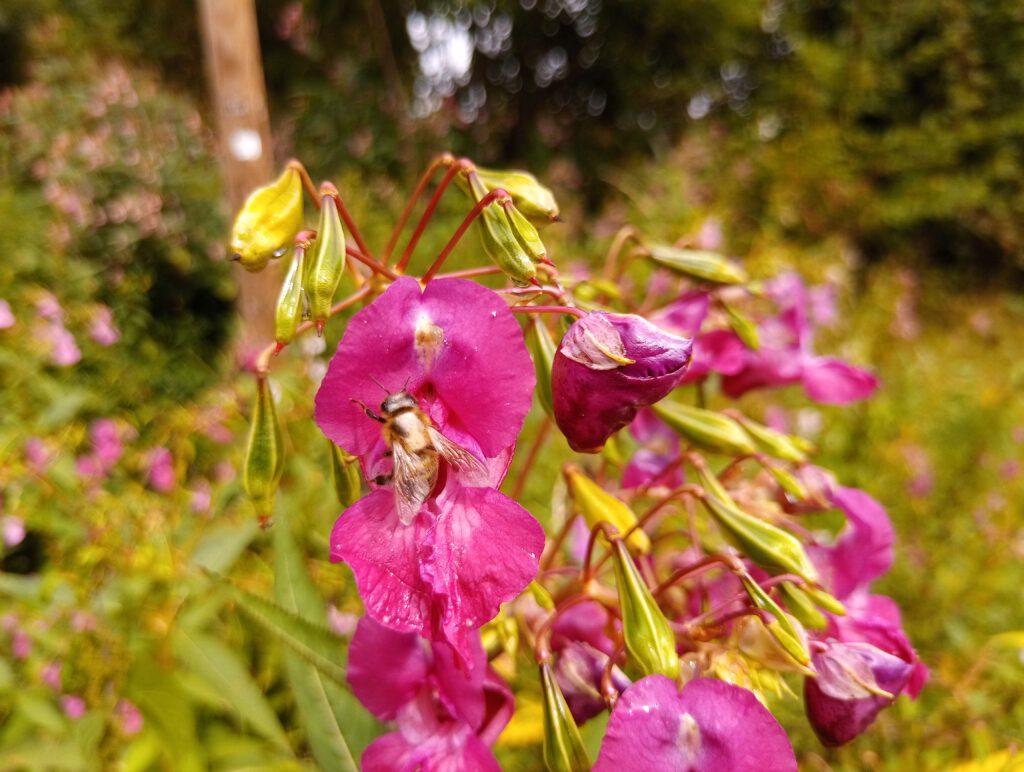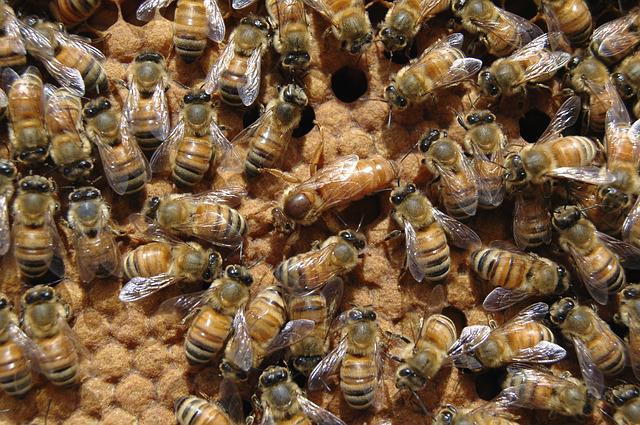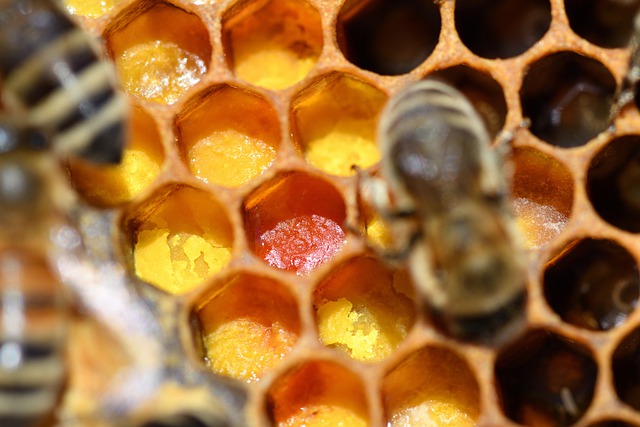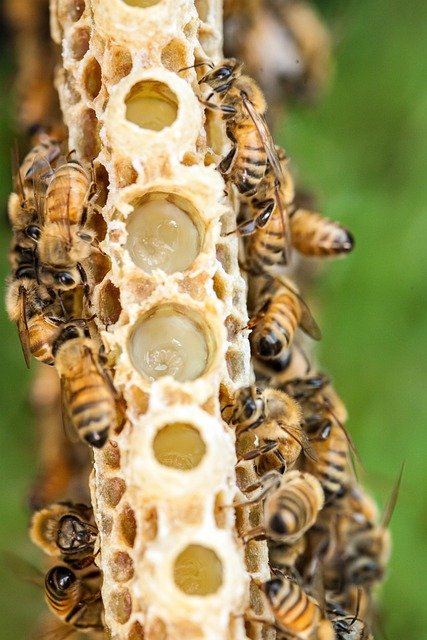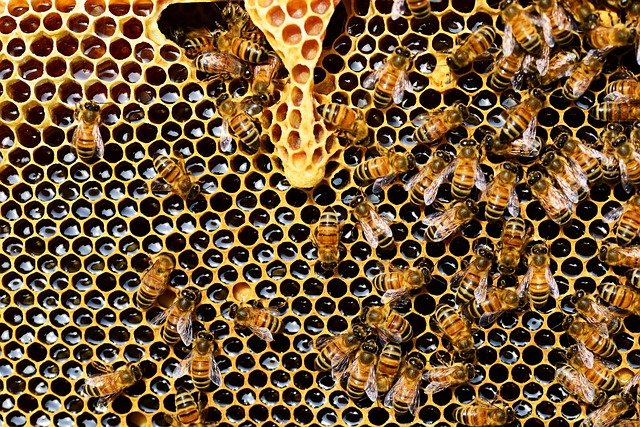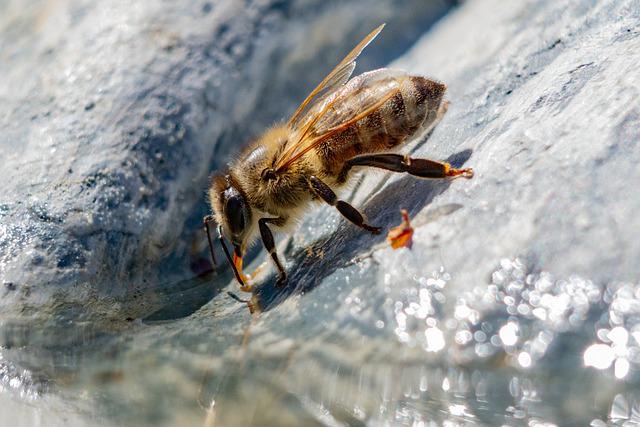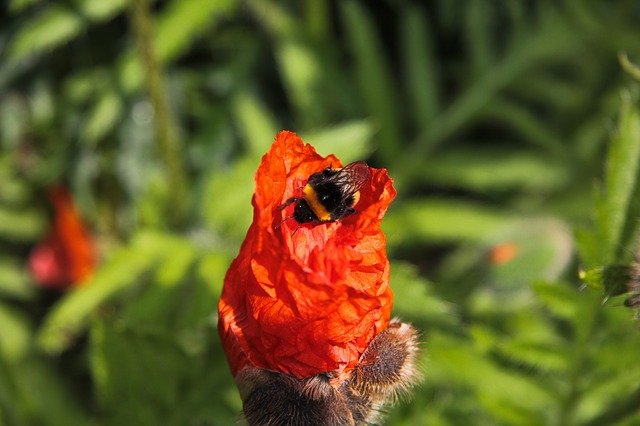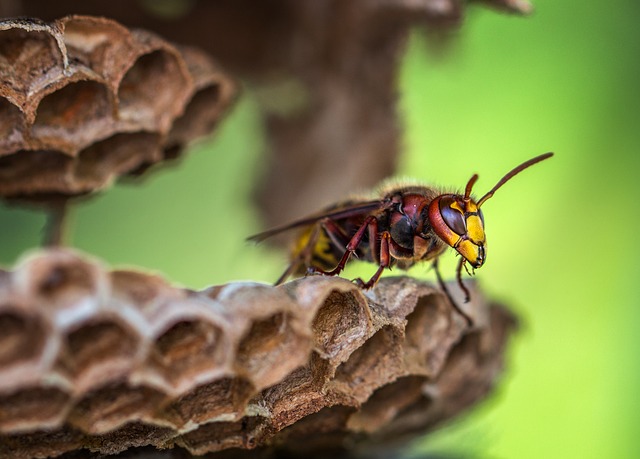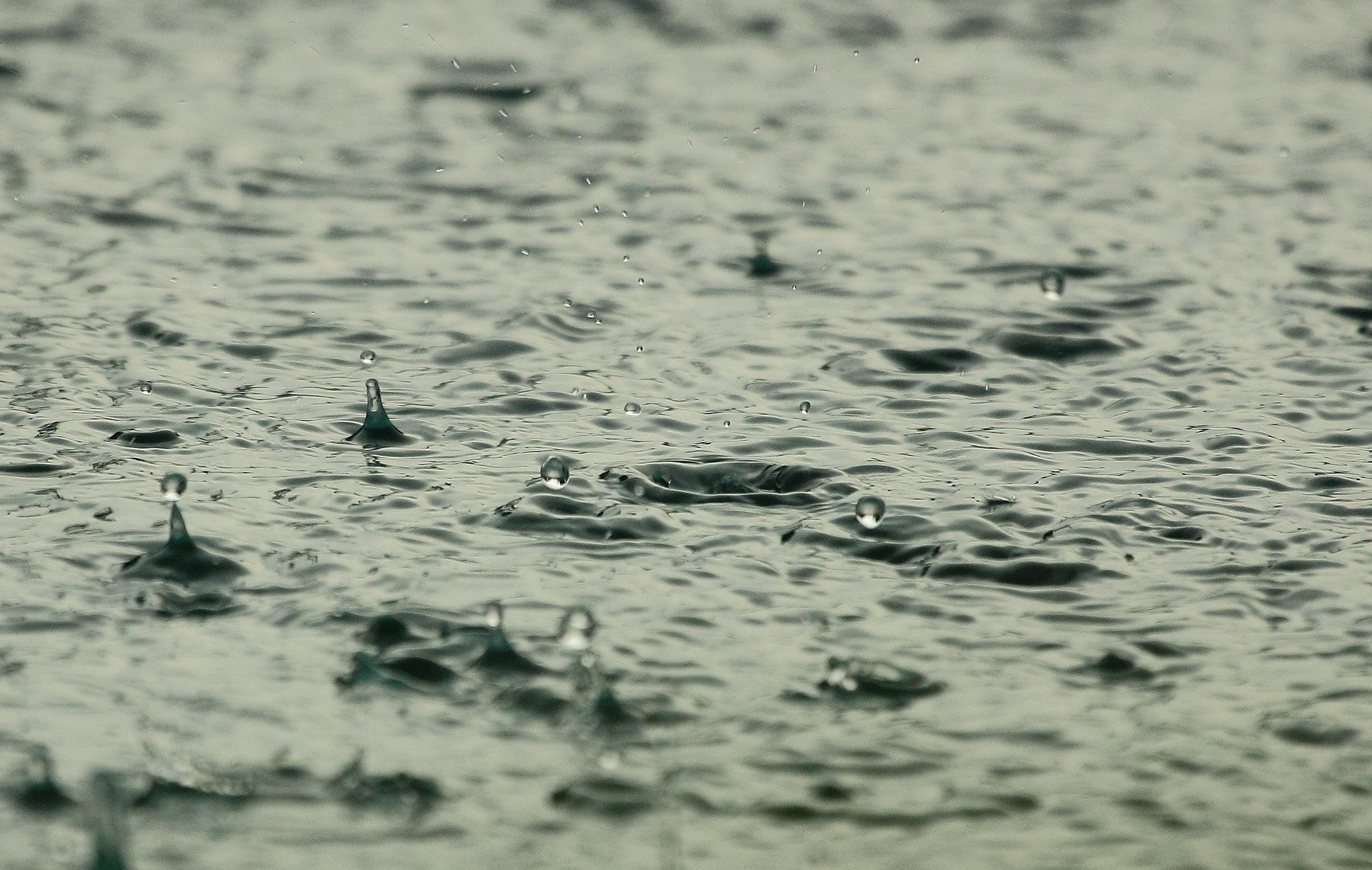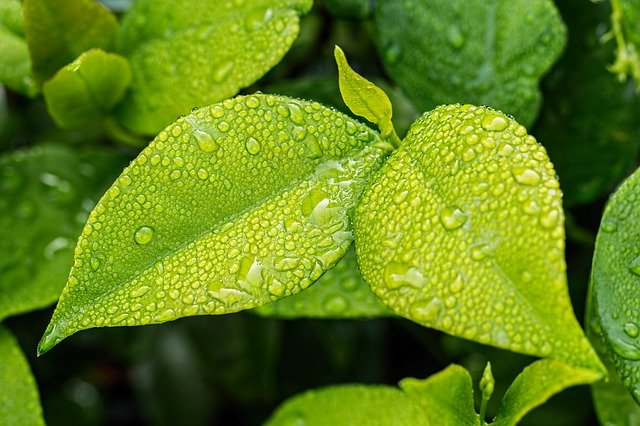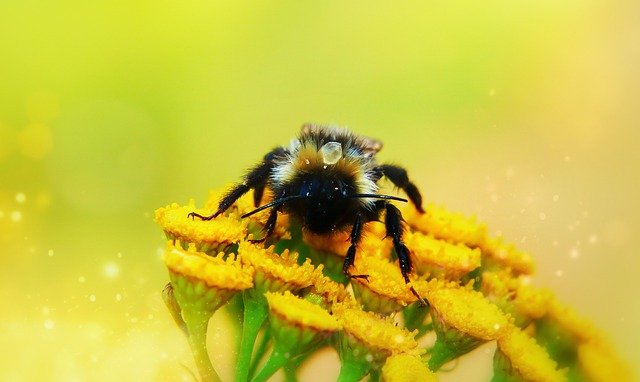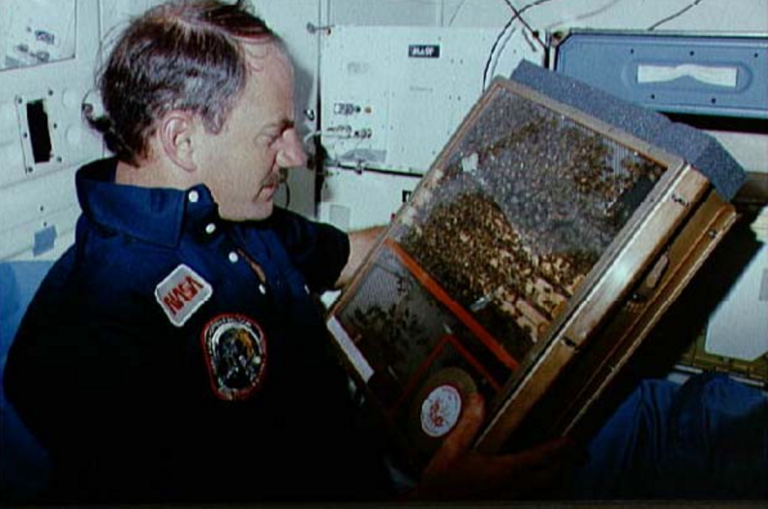No time for reading? Check out the video on Youtube:
Restoring Old Skeps For Beekeeping (using WHAT?!) – Watch on Youtube
I like beekeeping. And even more so traditional and historic beekeeping. But my interest isn’t just theoretical. I like to try things out and experience first-hand, what it is like to use these old techniques and customs in real life. Where I live– northern Germany that is – the traditional way of keeping bees is using Skeps made of straw. Straw is a versatile material, it’s cheap and can be found in abundance, wherever there is agriculture.

But there is also a downside to using straw as a building material. It is not very resistant to rain, and humidity. If it isn’t kept dry it will soon start to rot. No problem in warmer climates, where it doesn’t rain a lot. But where I live, we get quite a bit of Rainfall all year round.
When using skeps made of straw in such conditions, the skeps need to be protected from the weather. And that can be done in many ways. You can build a shelter, or you can put on a protective layer of let’s say clay or adobe. People used whatever worked, was cheap, and could be acquired easily. And where I live, well, here this happened to be poop.
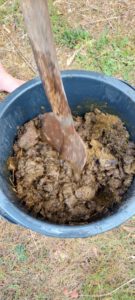
Yeah, sounds gross right. But it is not as bad as you might expect. People didn’t use just any poop though. They only used a very specific kind of poop. And turns out, that acquiring this specific kind of poop wasn’t that easy at all in our modern world. Agriculture has changed a lot over the past generations and with this change, plenty was lost on the way. And so was the perfect poop.
So, it took me a while to get the right kind of poop for my Skep project. Actually, it took several years. Who would’ve known that I would spend this much time of my adult life in the search for the perfect poop…?
I’ve been already using skeps in my apiary for a while now. But up until today I only used old skeps that were already in working conditions when I bought them. Old skeps can last a very long time. It wasn’t uncommon for a skep to be used for many generations of a beekeeping family. When protected right, even skeps made of straw can last for centuries. But from time to time these skeps need a little maintenance. Over time the protective layer cracks, falls off and has to be replaced.
And this is the project I took on for now. Some of my old skeps were a little bit beat down from years of facing the harsh weather, so it was time for me to restore them. I also had a newly made skep that needed its first protective coat.
After finally finding a source for the right kind of poop, I was very excited. I mean who doesn’t get excited about getting a huge load of poop for their project?
But what is this perfect poop and what makes it so special? Why is it, that you only can use this sort of poop for your skeps and nothing else? Is it just tradition or are there any practical reasons? In theory, I already knew the answer but once I did the poopwork myself it all started to really make sense. This is the beauty of hands-on projects.
The magic poop for beekeeping comes from cattle. But how is cattle poop any special and rare you might ask? But more on that later
First, let’s get our hands dirty. before you can apply a new coat of poop one must prepare the skeps by getting rid of cracked and loose parts of the former plaster.
When preparing a used skep for a new swarm of bees you also must extract the old combs. This is easiest with a special dedicated skep beekeeping tool, which is called a skep knife. You can also use this tool when the skep is occupied to check in on your bees. You can use it to bend the combs to get a better look or to cut off combs for harvesting honey.
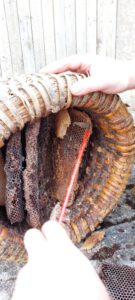
In the skeps, the combs are supported by little dowels made of rosewood, which are pierced through the skep from one side to the other. When removing combs all the way up to the top of the skep you must extract those as well to loosen the combs.
When the skeps are empty and prepared, you can start applying the poop plaster. Gloves are optional. I was told, that using your bare hands is better, for the cattle poop is very good for your skin. But for now, I didn’t want to go too crazy and put on at least a little protective layer.
Now the fun begins. Working with cattle poop is actually quite fun. I tried different techniques to smear it on until I figured out a way that worked. You want to get a good and even coverage all over the skep.
So, back to our poop problem: What makes this poop so special and hard to come by? There are tons of farms all around the world. And on these farms, there is even more cattle poop.
But here is the thing: the poop from cattle that are fed with any kind of processed feed doesn’t work for your skeps. You need to have poop from cattle, that are pasture-raised with no artificial extras or additives to their diet. Their poop must have the exact right consistency.
So, it all comes down to the right diet of the cattle. And you don’t get that in modern conventional agriculture. You can only find such conditions on organic cattle farms. But there is even more to that. Even the poop from organic cattle farms isn’t always right. The consistency of the poop changes over the year. And there is only one time in the whole year where the poop is just right. And that is at the beginning of spring typically around may. It is the time when the pasture grows in its full juicy glory, and the cattle are eating a big load of fresh nutritious grass for the first time after the long winter. This seasonal diet change gives the cattle a very runny kind of poop with plant fibers that are digested and broken down just the right amount so that they are neither too big nor too small. The perfect mix for your skeps.
And this poop also trumps materials like clay or adobe. Those materials, once dry tend to crack and fall off very easily. The poop on the other hand remains a little flexible even when dried up.
Fresh poop is the best, as it already comes in the right viscosity. But you can also use poop that has dried up a little by just mixing it with the right amount of water. Again, you must get the consistency just right. Too much or too little water and the poop mixture will not stick to your skeps. It took me a while to figure out the perfect mix. But once you hit the sweet spot, your plastering material becomes magical, and you can easily forget what kind of substance you are working with. Such poop from happy and healthy cattle has a surprisingly low odor.
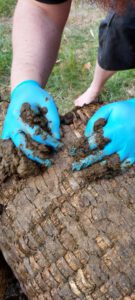
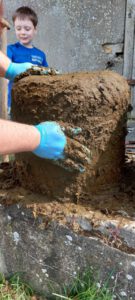
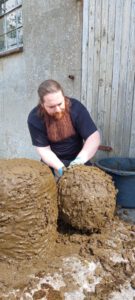
After applying the poop, you let the skeps sit in the sun for several hours until the plaster is all dried up. Once dried up, the poop has absolutely no smell to it anymore. Now you put back the dowels and reopen the entrance hole.

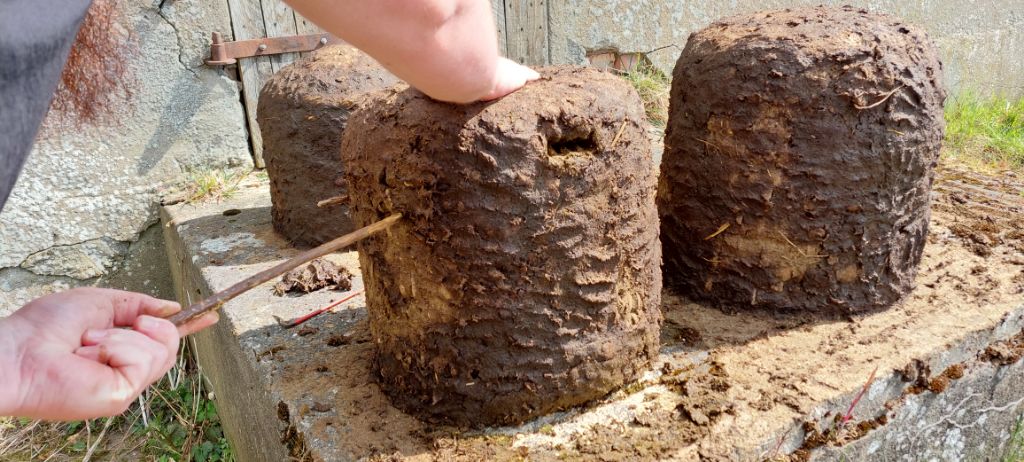
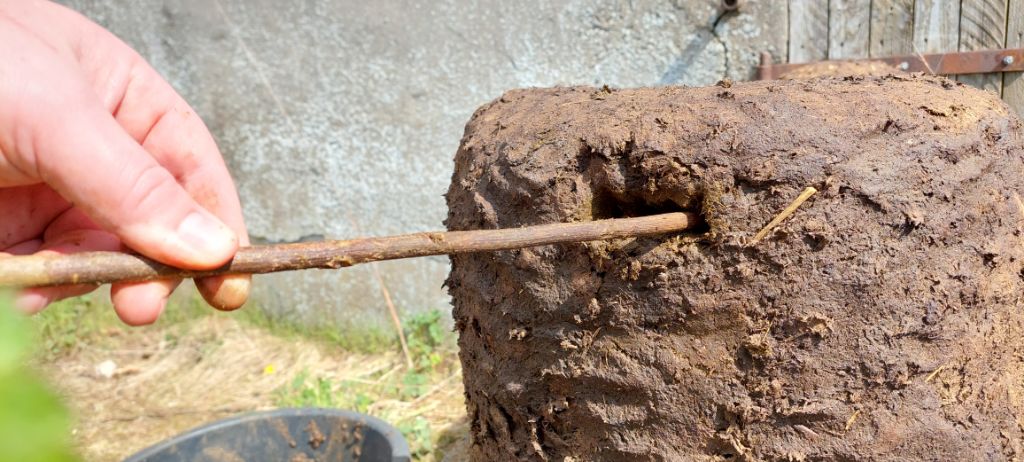
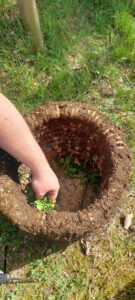
Finally, you rub-down the inside walls of the freshly pooped on skep with a brush of fresh meadowsweet. This gives the skep a nice smell which is believed to lure in wild swarms and to keep swarms you put in yourself from venturing out again. This old tradition might seem a little bit superstitious at first, but modern research has shown, that the essential oil of meadowsweet contains the same chemical compounds, that are produced by swarming bees themselves when they mark a potential new home for their colony.
And just like this, the once beat-down skep is looking great again and is ready for its new tenants.
The bees seem to enjoy their new home. It Isn’t a shitty place after all, is it?
